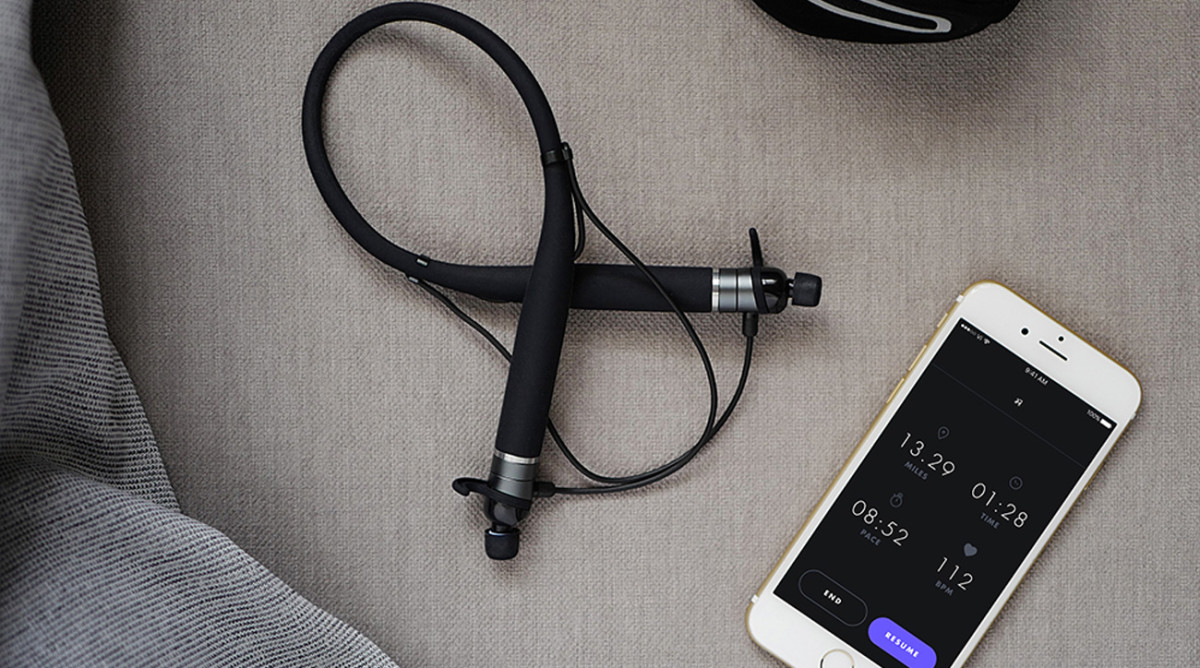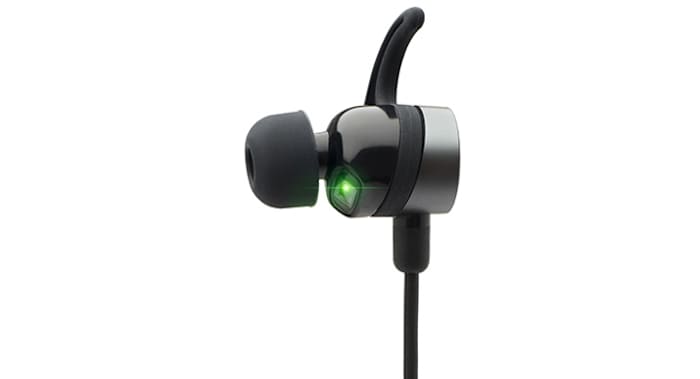Lifebeam Vi review: How do the AI voice coaching, Bluetooth headphones stack up?
With voice assistants all the rage these days, it was only a matter of time before they started to become more prevalent in wearables. This is where LifeBEAM steps in to help fill the void. While they’re not the first, they are certainly one of the more promising wearables in this space. LifeBEAM was originally founded as an aerospace R&D, but they have since turned their focus toward what they call “AI-powered wearables." The LifeBEAM Vi is their first foray into this space with a pair of bio-sensing headphones aimed to put an AI personal trainer right in your ears.
A heart-rate sensor is built right into the headphones, so you don’t need to wear a fitness tracker while you go out for a run. There’s also a barometer, six-axis accelerometer and gyrometer integrated into the unit to help track things such as your speed and cadence, but you’ll have to pair it with your phone to use GPS. If you’re the type of person that does not like to carry their phone with them while they run, keep in mind that you do have to pair Vi to your phone via Bluetooth.
Garmin Vivosmart 3 review: Testing out the tracker's stress monitoring, rep counter, more
The Lifebeam Vi ($248, amazon.com) weighs in at 1.3 oz, which is incredibly light when you see the entire Vi unit in person. I was hesitant about using “neckbuds” for the first time, but I hardly noticed the collar around my neck even while sprinting. The sweat-proof earbuds are one of the most comfortable in-ear pairs of headphones that I’ve ever used. Each Vi comes with a set of fins and gel eartips to fit all types of ears, and at no time was I ever concerned about them falling out.
They partnered with Harman Kardon to handle the hardware, and the audio quality is solid. While I’ve used better-sounding pairs of Bluetooth headphones, you can expect the Lifebeam Vi to deliver a strong audio experience. Unfortunately, trying to play music through the app was not a great experience due to the clunky way it handles playlists and tracks. I ended up turning back to using the music apps on my phone to handle audio.
The app has a clean and simple design that was intuitive to use. It’s compatible with Apple HealthKit, Google Fit and Strava if you want to share data. Spotify is also integrated into the app, although you must have a premium account to use it. You are given four options when you want to start a run: Distance Run, Time Run, Free Run and Cycling. When you’re done with a run, all your feedback is packaged into easily digestible and nicely designed charts and tables.
Heart-rate tracking seemed to be very accurate as far as wearables go. I tested it against several wrist-based trackers and found them to match up nearly every step of the way. Compared to Under Armour’s wireless headphones, which I reviewed late last year, the heart-rate tracking here was far more reliable.
The main draw of Lifebeam Vi is the personal trainer that is supposed to help coach you. It requires about 120 minutes of running data to fully acclimate itself to you, and after that introductory period, it will be better suited to make recommendations based on the data it gathered from your workouts. It offers some useful features such as “Step to the Beat," which plays a beat to get your cadence to the ideal step rate. Vi will also periodically chime in with advice to help you reach your goals or even to help reduce injury risk and fatigue. You can also have audio beacons set off gentle pings to let you know when you’re approaching milestones and mile markers, which is a nice touch that can give you that extra motivation to finish a run strong when fatigue is setting in.
Lifebeam Vi bills itself as “The World’s first AI personal trainer” but that statement isn’t exactly true. Aside from the fact that true Artificial Intelligence is years if not decades away from coming to fruition, your relationship with Vi is mostly one sided as you can’t really have a conversation with Vi (more on that in a bit). Vi will give you personalized advice based on your running data and much of it can be very useful. However, there are limits to what Vi can offer as a personal trainer since most of what she says is pre-recorded, and she certainly doesn’t match up to the real thing.
How to take your workout outdoors: A pool session can be more than just swimming laps
You can say commands to Vi to get feedback on your run. If you ask “How am I doing?" Vi will give you feedback by telling you stats such as your pace, distance and heart rate. You can also ask for specific information, such as your heart rate. While voice commands are a great idea, Vi fails in execution. In my experiences using the Lifebeam Vi, voice commands were practically useless. I spoke as clearly and concisely as possible, and if I was lucky, only one in every 10 or so attempts was understood. I tried yelling commands at Vi in both clear and mildly windy conditions and the success rate remained roughly the same. I eventually abandoned trying to use voice commands altogether, which is unfortunate, as it would be a nice feature to use if it consistently worked. Not to mention, you’ll get a lot of weird looks trying to yell commands at Vi in public, especially when you have to repeat the same command over and over hoping that it will be understood.
The LifeBEAM Vi is limited to outdoor running, so those of you that like to hit the treadmill won’t find much use out of it, aside from having a pair of Bluetooth headphones for your run. LifeBEAM’s CEO Omri Yoffe said that they would look into adding more features such as indoor support, but right now they’re focused on nailing the outdoor experience.
For someone new to running, the Lifebeam Vi could be a very useful tool. It offers some good coaching for those trying to learn the ins and outs of running while helping you to reach certain goals. Vi is also more conversational and seems more human compared to assistants such as Alexa or Siri. However, if you’re a seasoned runner, the Lifebeam Vi may not offer you the best bang for your buck. You should have no trouble finding a far cheaper pair of Bluetooth headphones, and you can just as easily get the same audio feedback on things such as pace and speed from the plethora of free running apps available. At $250, they certainly don’t come cheap, and you can get a similar experience for a lot less.








